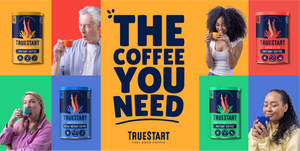Beyond the beard - what's next for coffee?
Coffee comes in waves. As you can imagine, there's a lot of opinion surrounding the exact definition of each one, not to mention what the next wave will be. Coffee is the world's most highly traded commodity after oil, so it's all pretty fascinating. This potted history ends with my thoughts on where coffee is going next. After all, who doesn't love a debate?
Before the tide
Before the first wave, coffee houses had been becoming more and more popular all over the world, from the Middle East to Europe. They were places for people to come together and put the world to rights over a stimulating, caffeinated drink (what's really changed then?!)
In the 15th and 16th centuries, coffee houses, or 'Qahveh KhaneH' became very popular across the Middle East. By the 17th century they had reached Europe.
Benjamin Franklin was a big fan of coffee houses, using them as offices during his European trips. Franklin even created the Franco-American Alliance of 1778 at a French café called Procope.
First wave - mass market
Given the popularity of coffee, it was never going to be long before entrepreneurs saw a huge market for a product that would be affordable enough for every home.
The first wave of coffee happened from the early 1800s and was all about the mass market. With a focus on increasing consumption, coffee went from a luxury for the upper classes to a drink that could be found in every middle class kitchen. Coffee was heavily marketed for its unique flavour and the first wave was responsible for turning coffee into the major commodity that it is today. With brands like Maxwell House and Folgers leading the way, there were plenty of revolutionary packaging innovations like airtight cans, and strides forward with processing and marketing that would shape the world of coffee forever.

A Maxwell House advert from the early 1900s. Their slogan "Good to the last drop" was one of the most successful marketing lines of its time.
Like most mass-market movements, this first wave is criticised for sacrificing quality and taste in favour of convenience and the mass production of cheap coffee.
Second wave - experiencing speciality
Artisan coffee is not new. The second wave was defined by the rising enjoyment of specialty coffee, starting in 1966 at Peet's in San Francisco and quickly birthing Starbucks, which really got going after Howard Schultz made it his mission to bring the joy of a European espresso-based drink in a social setting to the USA (Pour Your Heart Into It is a great read).
Peet's Coffee & Tea, Berkeley, California in 1969 - still open for business today!
With an emphasis on roasting styles and coffee origins that eventually made way for the third wave, the second wave of coffee consumption elevated the Arabica bean and made it clear that quality coffee was not the Maxwell House that everyone had become used to.
The popularity of coffee house brands like Starbucks meant that speciality coffee had to scale fast but be very consistent. The focus was on marketing and the result was homogeneity, and it has been argued that it was a rebellion against this homogeneity that really kick-started the third wave.
Third wave - crafting the cup
Starting in the 1990s, the third wave of coffee is characterised less by the social experience and more by the coffee itself. Marketing was to take a back seat as artisan production methods began to rise, with improvements at every stage. This impacted everything from how plants were grown to the relationship between growers, traders and roasters, to how the beans were roasted. Direct trade was born, as was single-origin coffee, latte art and brewing devices such as the V60 and Chemex.
Trish Rothgeb of Wrecking Ball Coffee Roasters (who coined the term "coffee wave" in the first place) said "The third wave is, in many ways, a reaction. It is just as much a reply to bad coffee as it is a movement toward good coffee."
Trish Rothgeb, co-founder, co-CEO, director of coffee, and roastmaster at Wrecking Ball Coffee Roasters, who made their name as part of the third wave of coffee
Trish was referring to the homogeneity brought about by the likes of Starbucks, and championing the uniqueness of each cup. The idea was to view coffee as a foodstuff, from a culinary perspective in the same way that you would high quality cuisine.
Fourth wave - great coffee on every corner
There's certainly a lot of debate surrounding the definition of fourth wave coffee. Personally, I buy into the concept that it was primarily about taking the artisan movement of the third wavers and making it more accessible. For me, the rise of independent, speciality coffee businesses over the past 15 years has characterised the fourth wave, making unique and delicious coffee available in every home, on every high street and in every village, largely thanks to the internet.

Independent coffee shops serving quality coffee are now the norm
The fourth wave also saw coffee fanatics shift their focus from love to obsession, carrying out what can only be described as science experiments with ideas such as extreme precision brewing. Although unlike some, I don't agree that this scientific approach of the few defined the era.
The third wave brought craft coffee to the fore, but the fourth wave made it the norm. Coffee snobs are no longer a rare breed and can now be found in every group of friends, every office, every conversation!
Fifth wave - beyond the beard
If there's a debate about what the fourth wave of coffee represents, there's certainly a debate about whether a fifth even exists. I certainly believe it does.
Fifth wave coffee goes beyond the beard. I'm obviously being tongue-in-cheek, but the bearded hipsters that defined fourth wave coffee have become fairly tedious and routine. To me, fifth wavers are as open-minded with their coffee as they are with their approach to life, looking for exciting experiences and a bit of adventure that they can enjoy with their friends and post about on Instagram.

A step ahead: cold brew coffee is proving itself as the perfect balance between health and experience
As far as I can tell, coffee waves come with changes in consumer behaviour. Millennials have recently become the largest spending consumer cohort and are driving the largest change in consumer behaviour since baby boomers started earning a wage. In an interesting combination of traits from each of the previous waves, they're interested in social experiences, convenience and ethics. What's new is they want it all, including a transparent supply chain, and an understanding of the health properties (of all food and drink, not just coffee).
We're in the early years of the fifth wave right now, so only time will tell how exactly it will be defined in years to come. I believe that successful brands be prepared to take risks and challenge current attitudes, with more concern for what's next than what came before. It's time to get inventive. Cold brew coffee is massively on the rise, with its inherent smoothness introducing coffee to consumers at a younger age than ever, a welcome replacement for sugary energy drinks. Coffee is becoming fashionable in bars and even nightclubs. It is as exciting to the under 40s as it is baffling to the over 50s and only one thing is for sure - coffee is about to enjoy another makeover.













